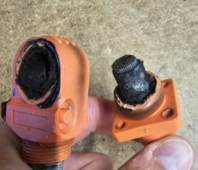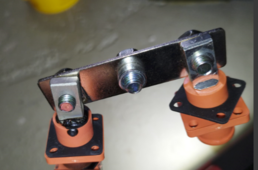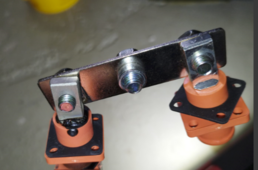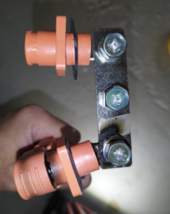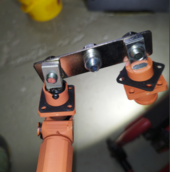Op had bad crimp on one end and what appears be bus bar - washer sandwich other end ….heat meeting in middle of probable loose - improper applied snap push on cable connector. Op was only concerned with documentation after the fact not before.My factory-assembled Apexium 280A box with cables.
I suspect the mating between the plug and socket is electrically poor and not substantial enough for the loads it is meant to carry. At least in my unit it always felt like the plug connected to the socket easily with hardly any mechanical force required. My theory might be incorrect but I am not going to continue with these imitation connectors, I am replacing them with screw-down posts to which I can bolt down a ring lug.
These are not Futronics connectors. I bought Futronics from Minerals on AliExpress and although the Futronics does fit the socket they do not "click" in place and feel loose. They do not have any markings on them other than "200A 50mm".
I will rectify the busbar connecting the + terminals. As pointed out in another thread, it seems to have been incorrectly assembled and that could also have lead to heat in the cable - note the discoloured label.
OP had futronic connectors on his own personal battery so knew the diff.
Bolt on connections especially with customers is a good idea. They have to use tools to mess with it. We called that use of tools child proofing years ago.




